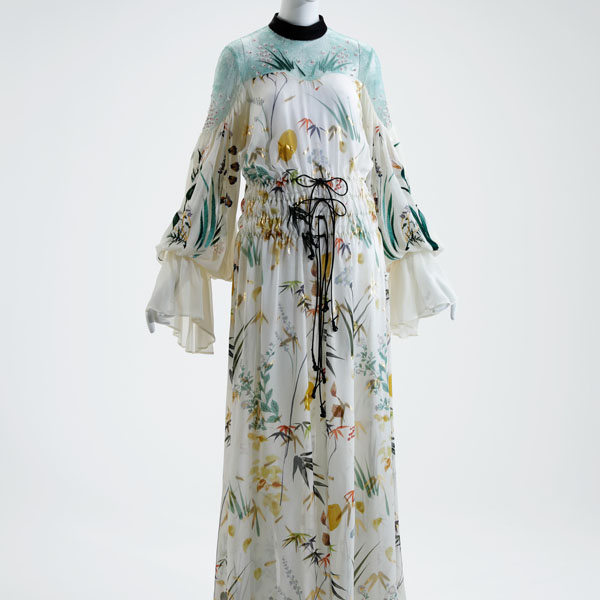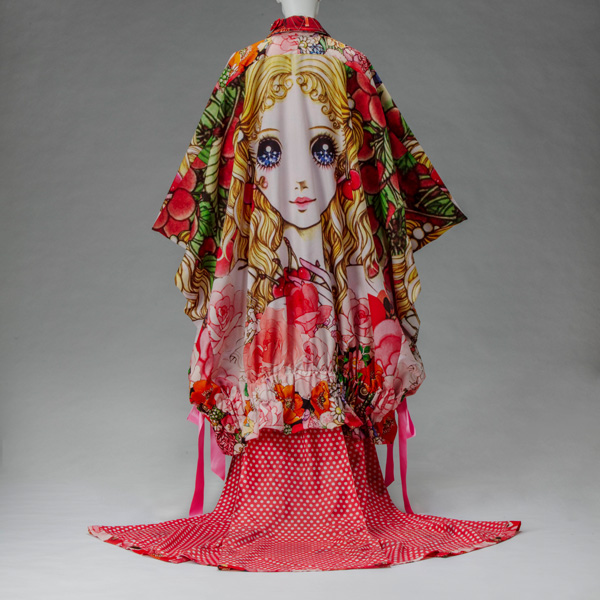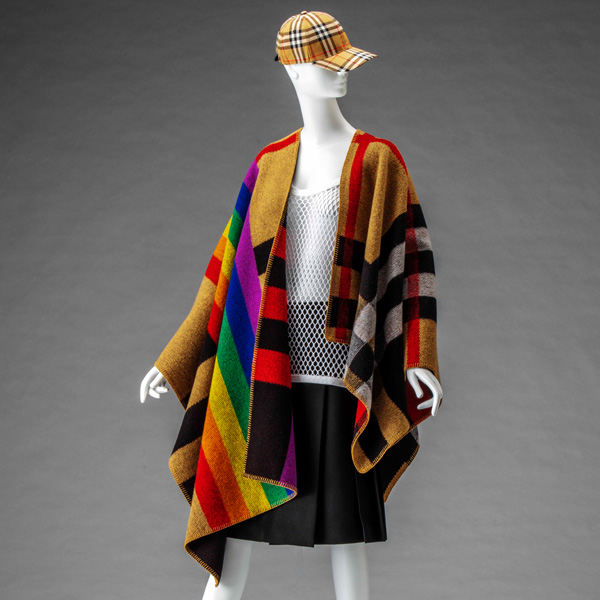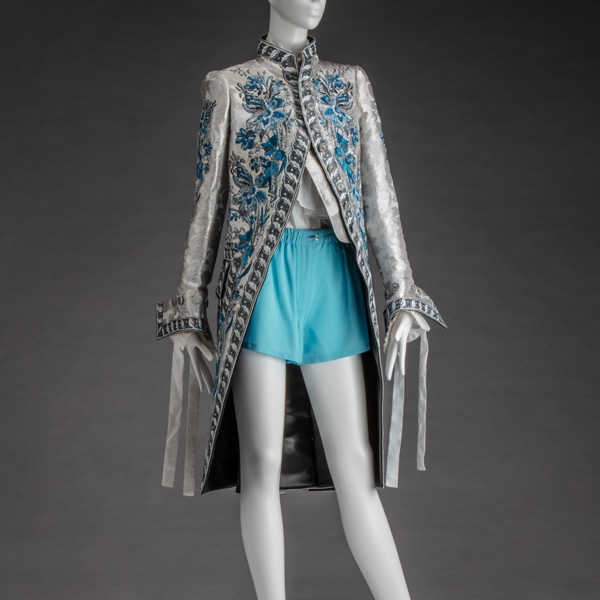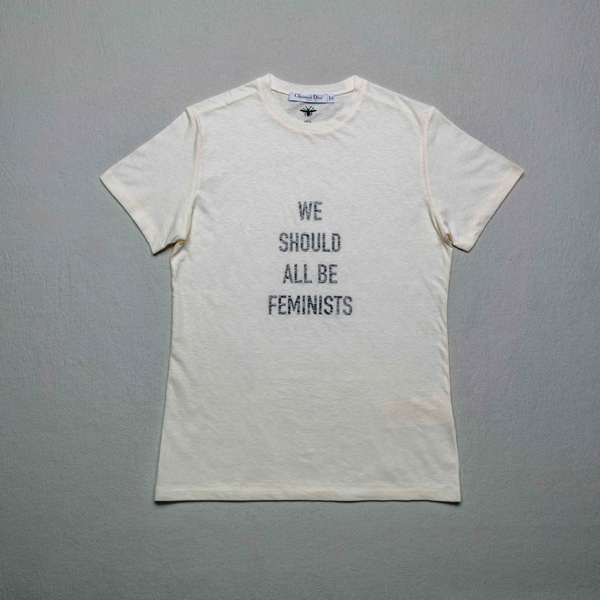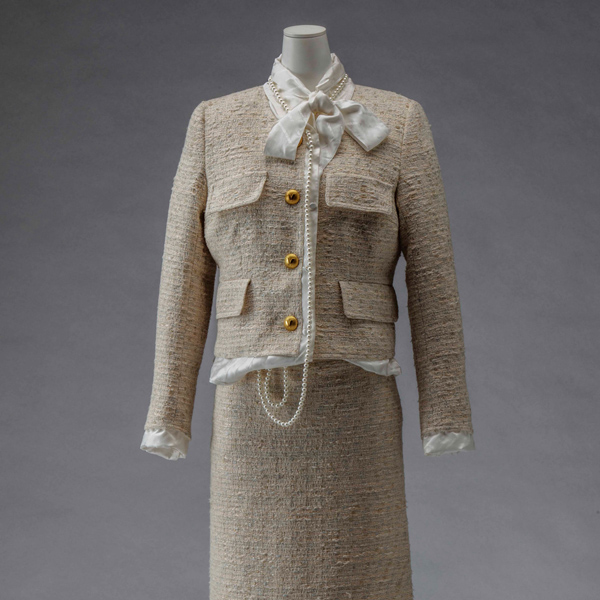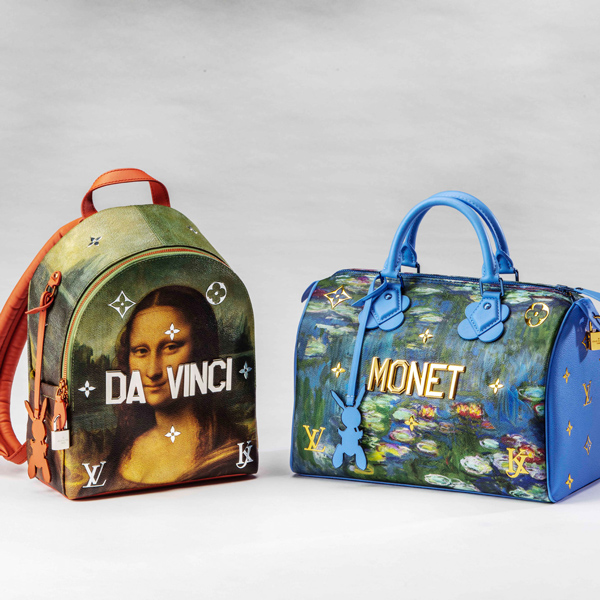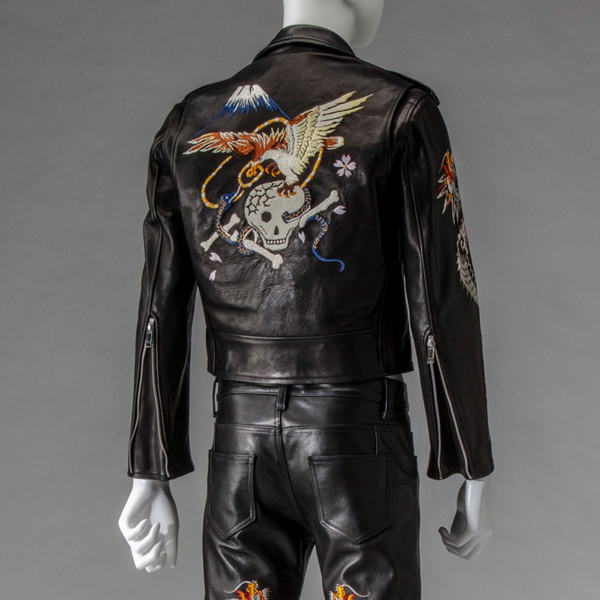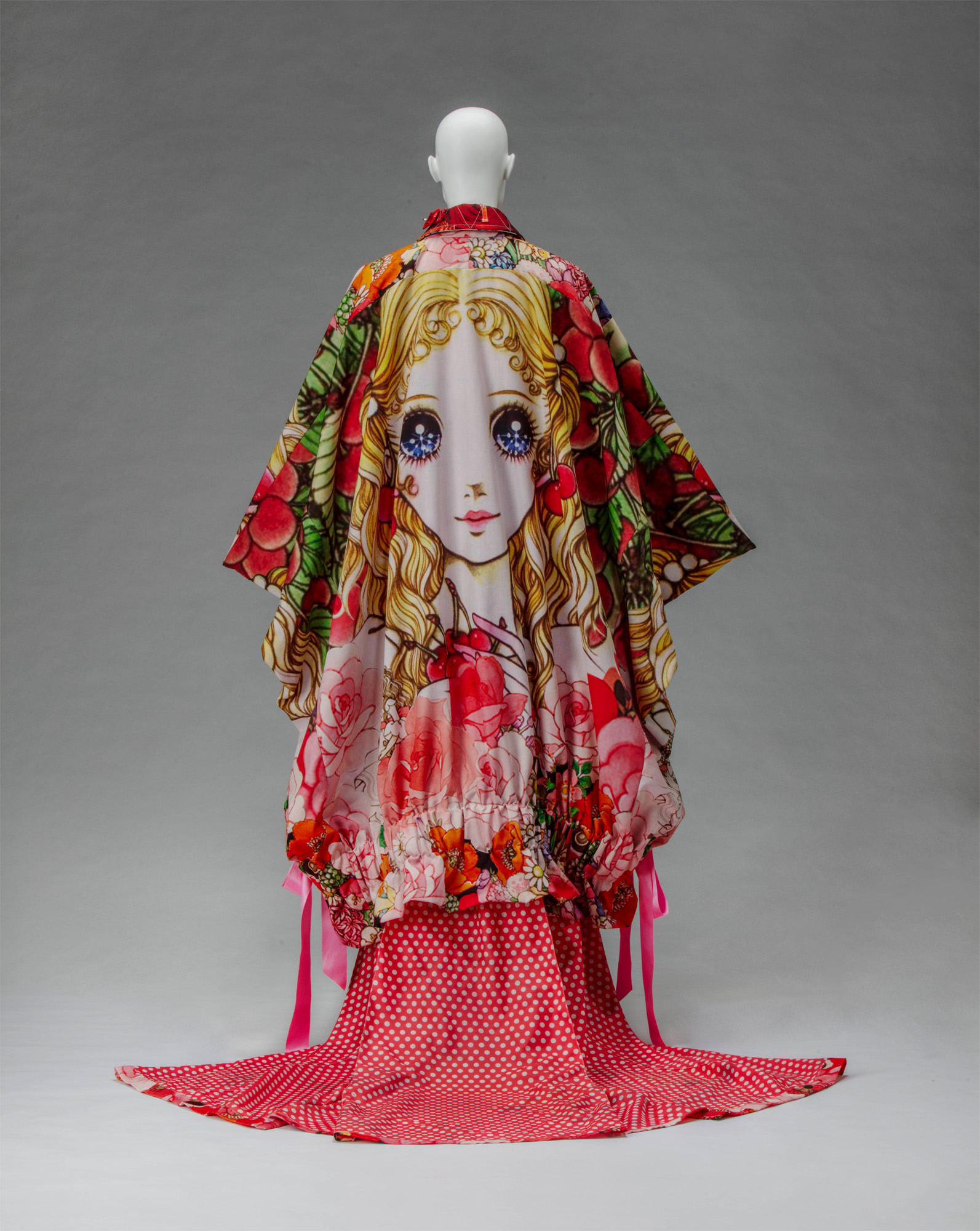
© The Kyoto Costume Institute, photo by Takashi Hatakeyama
You can enlarge by putting the mouse cursor on the image.
Dress
Spring/Summer 2018
- Designer
- Rei Kawakubo
- Brand
- Comme des Garçons
- Label
- COMME des GARÇONS
- Material
- Polyester canvas printed with illustration art by Macoto Takahashi; pink nylon satin ribbon trimmings and a train with polka dots.
- Inventory Number(s)
- AC13624 2018-11-2A
A dress with an oversize form that amply envelops the body, concealing arms and legs, sporting colorful inkjet illustrations of a doe-eyed young girl surrounded by a profusion of flowers. These graphics, strongly reminiscent of Japanese manga, are the creation of Macoto Takahashi, who provided cover art and illustrations for magazines targeting young girls from the 1950s to the 1980s, and who became a key mover in the kawaii culture that has now spread worldwide. Greatly enlarging Takahashi’s illustrations has made them visually stunning as well as cute. The resulting works are a direct representation of the style of Rei Kawakubo, who is known for designs that merge cuteness with strength, or that express the extreme or the excessive lurking in cuteness.
This dress is the signature piece of Comme des Garçons’ Spring/Summer 2018 collection, with its “multi-dimensional graffiti” theme. In addition to these illustrations by Takahashi, the collection includes prints by artists such as sixteenth century Italian painter Guiseppe Arcimboldo, and his contemporary Japanese suiboku-ga ink painter Sesson. Bringing together and curating an arbitrary group of two-dimensional images from ancient and modern artistic traditions, including both East and West, Kawakubo cuts the images along with the fabric, then reconstructs them three-dimensionally in the form of clothing. This approach can be seen as paralleling the freewheeling toughness of graffiti art that suddenly appears without context in urban spaces.
 Digital Archives
Digital Archives